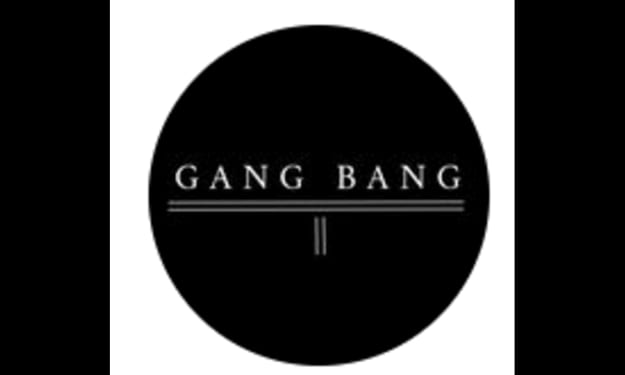CARNIVAL OF VENICE
HITORY, CARNIVALMASKS , ORIGIN.

According to legend, the Carnival of Venice began after the military victory of the Venetian Republic over the Patriarch of Aquileia, Ulrich II von Treven, in the year 1162. In honour of this victory, the people started to dance and gather in St Mark's Square. Apparently, this festival started in that period and became official during the Renaissance.[3] In the 17th century, the Baroque Carnival preserved the prestigious image of Venice in the world.[4] It was very famous during the 18th century.[5] It encouraged licence and pleasure, but it was also used to protect Venetians from present and future anguish.[6] However, under the rule of the Holy Roman Emperor and later Emperor of Austria, Francis II, the festival was outlawed entirely in 1797 and the use of masks became strictly forbidden. It reappeared gradually in the 19th century, but only for short periods and above all for private feasts, where it became an occasion for artistic creations.[7]
After a long absence, the Carnival returned in 1979.[1] The Italian government decided to bring back the history and culture of Venice and sought to use the traditional Carnival as the centrepiece of its efforts. The redevelopment of the masks began as the pursuit of some Venetian college students for the tourist trade. Since then, approximately 3 million visitors have been coming to Venice every year for the Carnival.[2] One of the most important events is the contest for la maschera più bella ("the most beautiful mask"), which is judged by a panel of international costume and fashion designers. Since 2007 the winners have been:
2007: La Montgolfiera by Tanja Schulz-Hess.
2008: Luna park by Tanja Schulz-Hess.
2009: The voyages of Marco Polo by Horst Raack and Tanja Schulz-Hess.
2010: Pantegane from England.
2011: La famille Fabergé by Horst Raack, and Ommagio a Venezia by Paolo and Cinzia Pagliasso and Anna Rotonaia, best costume for the official theme 19th century by Lea Luongsoredju and Roudi Verbaanderd.
2012: Il servizio da thè del settecento (teatime) by Horst Raack, most creative costume Oceano by Jacqueline Spieweg.
2013: Alla Ricerca del Tempo Perduto by Anna Marconi, most colourful costume Luna Park.
2014: Una giornata in campagna by Horst Raack, and Radice Madre by Maria Roan di Villavera.
2015: Le stelle dell'amore by Horst Raack, best costume for the official theme La regina della cucina veneziana by Tanja Schulz-Hess, most creative costume Monsieur Sofa et Madame Coco by Lorenzo Marconi.
2016: I bagnanti di Senigallia by Anna and Lorenzo Marconi, best costume for the official theme I caretti siciliani by Salvatore Occhipinti and Guglielmo Miceli.
2017: Il signore del bosco by Luigi di Como.
2018: L'amore al tempo del campari by Paolo Brando.
2019: I bambini della luce by Horst Raack, best traditional costume matrimonio all'italiana by Borboni si Nasce, most original costume Paguri by Nicola Pignoli and Ilaria Cavalli.
In February 2020, the Governor of Veneto Luca Zaia announced the decision to call off the Carnival celebrations in an attempt to contain the spread of the coronavirus disease.[8]
2022: Dragon Baby by Cinzia Mandrelli from Rimini and her brother Piersante.[9]
2023: Astrostar by Karen Duthoit. Second was 4 elements: fire, air, earth, water by Alissa Karaeva from Pesaro, and third was Processione a San Marco by Simone Fracca from Bologna.[10]
Carnival masks:
Typical masks worn at the Venice Carnival, which portray the satirical and exaggerated appearances often used
Masks have always been an important feature of the Venetian Carnival. Traditionally people were allowed to wear them between the festival of Santo Stefano (Saint Stephen's Day, December 26) and the end of the Carnival season at midnight of Shrove Tuesday (movable, but during February or early March). As masks were also allowed on Ascension and from October 5 to Christmas, people could spend a large portion of the year in disguise.
Maskmakers (mascherari) enjoyed a special position in society, with their own laws and their own guild, with their own statute dated 10 April 1436. Mascherari belonged to the fringe of painters and were helped in their task by sign-painters who drew faces onto plaster in a range of different shapes and paying extreme attention to detail.
Venetian masks can be made of leather or porcelain, or by using the original glass technique. The original masks were rather simple in design, decoration, and often had a symbolic and practical function. Nowadays, most Italian masks are made with the application of gesso and gold leaf and are hand-painted, using natural feathers and gems to decorate.[citation needed] However, this makes them rather expensive when compared to the widespread, low-quality masks produced abroad.[citation needed] This competition accelerates the decline of this historical craftsmanship particular to the city of Venice.
Several distinct styles of mask are worn in the Venice Carnival, some with identifying names.[11] People with different occupations wore different masks.[12]
Origin:
There is less evidence explaining the motive for the earliest mask being worn in Venice. One scholar argues that covering the face in public was a uniquely Venetian response to one of the most rigid class hierarchies in European history.[13] During Carnival, the sumptuary laws were suspended, and people could dress as they liked, instead of according to the rules that were set down in law for their profession and social class.[14]
Five women appear in open windows in an upper floor; five men stand on the ground. Two men are carrying egg baskets; one man passes an egg to another, who prepares to throw it at the women
Masked men threw eggshells filled with perfume during carnival.
The first documented sources mentioning the use of masks in Venice can be found as far back as the 13th century.[15] The Great Council made it a crime for masked people to throw scented eggs.[16] These ovi odoriferi were eggshells that were usually filled with rose water perfume, and tossed by young men at their friends or at young women they admired.[14] However, in some cases, the eggs were filled with ink or other damaging substances.[14] Gambling in public was normally illegal, except during Carnival;[14] the Great Council document decrees that masked persons were forbidden to gamble.[17]
Another law in 1339 forbade Venetians from wearing vulgar disguises and visiting convents while masked. The law also prohibited painting one's face, or wearing false beards or wigs.[15]
Near the end of the Republic, the wearing of the masks in daily life was severely restricted. By the 18th century, it was limited only to about three months from December 26. The masks were traditionally worn with decorative beads matching in colour.
About the Creator
Madhankumarramesh
😄 Living with a smile and a bit of swag.
🌞 Radiating positivity one day at a time.
😊 Spreading joy like it’s confetti.
🎈 Up, up, and away on a cloud of happiness.
# Insta>>> @crazy_kavi_kavi
# Fb>>>@kavikavi
# Threads>>>@crazy_kavi_Kavi






Comments
There are no comments for this story
Be the first to respond and start the conversation.